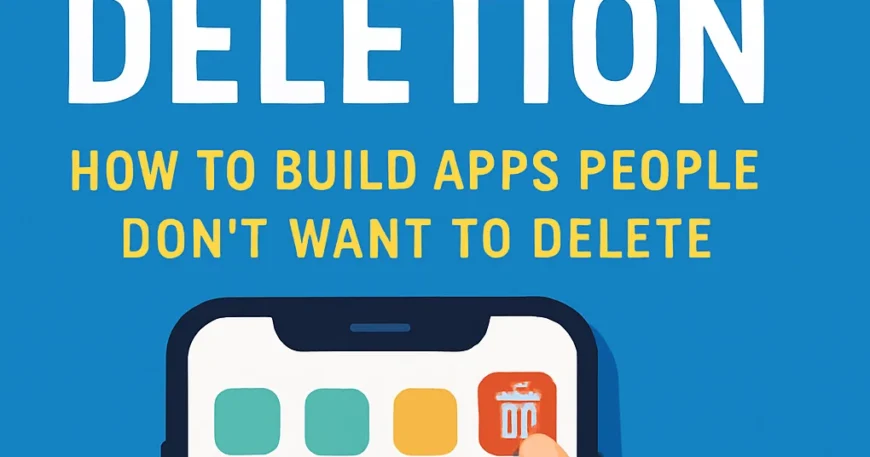The Harsh Truth About App Retention in 2025
In 2025, users are more selective than ever. With smartphones cluttered by dozens of apps, your mobile app must earn its place — or risk being deleted within days.
According to recent data, over 70% of users uninstall an app within the first week. So how do you design an app that sticks?
Let’s talk about “designing for deletion” — not to accept it, but to beat it.
1. Know Why Users Delete Apps
Before you can prevent deletion, you need to understand why it happens:
- Poor onboarding experience
- Slow performance
- Too many notifications
- Large app size
- Lack of value or novelty
- Confusing UI or unclear purpose
Solving these pain points starts with one thing: user-first thinking.
2. Onboarding: Make the First 60 Seconds Count
Your app’s first impression is its most critical moment.
- Keep onboarding short and interactive.
- Highlight your core value immediately.
- Let users do, not just read.
- Offer “skip” options and quick sign-ins (Google, Apple, OTP).
Pro Tip: Use progress indicators and reward tiny achievements during onboarding to build trust and momentum.
3. Build Features for Retention, Not Just Flash
Don’t overload your app with features. Focus on what keeps users coming back:
- Personalization: Let users customize dashboards or feeds.
- Progress: Show growth, streaks, achievements, or saved history.
- Feedback loops: Notify users when things happen (but don’t spam).
- Offline functionality: Enable use even with poor internet.
- Micro-interactions: Delight users with small, satisfying animations or responses.
4. Notification Strategy: Inform, Don’t Interrupt
Push notifications should add value, not create irritation.
- Segment your users.
- Let users choose notification frequency.
- Use smart timing (not 2am pings).
- Avoid clickbait — users know when they’re being manipulated.
1 in 3 users will uninstall your app after just one annoying notification.
5. Monitor & Iterate Based on Real Behavior
Install analytics from day one:
- Track drop-off points
- Measure feature engagement
- Collect qualitative feedback through in-app surveys
Let the data show you where users struggle or lose interest — then fix it fast.
6. Make It Light, Fast, and Accessible
In 2025, speed and size matter more than ever, especially in emerging markets.
- Optimize app size (under 50MB, if possible).
- Compress images and minimize load times.
- Support low-end devices.
- Add accessibility features (text size, voice support, etc.).
Final Thought
Designing for deletion doesn’t mean expecting failure.
It means accepting that users will judge fast, and you only get one shot to show value.
If you build your app like it might be deleted tomorrow, you’ll create experiences that make users stay.
Want to Build an App Users Love?
At ThinkDebug, we help startups and businesses create mobile apps that are not just beautiful, but built to last.
📩 Contact us for a free app strategy session.





